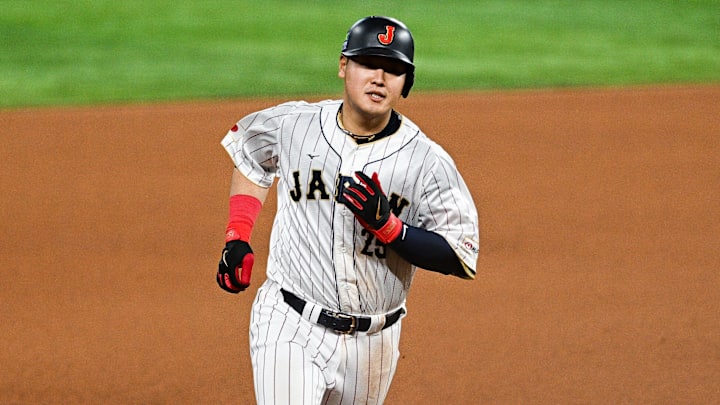For a San Diego Padres front office trying to stretch every dollar without punting on contention, this is exactly the kind of rumor that should perk up ears in San Diego. While the free-agent market for first basemen and middle-of-the-order bats dries up quickly after the headliners, the Padres are already looking somewhere else entirely: across the Pacific.
When scouts from a half-dozen big-league clubs filed in to watch Japan vs. Korea in a recent exhibition, the presence of Padres evaluators in that crowd wasn’t a coincidence. It was a signal that A.J. Preller and company are at least willing to plant a flag on one of the more intriguing overseas bats available this winter.
That bat belongs to Kazuma Okamoto, a 29-year-old cornerstone of the Yomiuri Giants and one of the most decorated sluggers in NPB. Okamoto has spent the last decade turning Tokyo Dome into his personal launch pad, stacking up hardware and home run crowns while anchoring the middle of the order for one of Japan’s most storied franchises. Now he’s using the posting system to chase a new challenge in MLB, and the Padres are doing their homework early.
Padres doing homework on Kazuma Okamoto as posted Japanese slugger hits MLB market
Okamoto is a true middle-of-the-order presence who has already banked six home run titles, 248 career home runs, and six straight 30-homer seasons from 2018–2023 in Japan. That kind of sustained production at age 29 is going to draw interest no matter what league you’re in. He’s primarily a first and third baseman, but with Manny Machado locked in at third for the Padres, the cleaner fit would be at first base and designated hitter, two spots on the depth chart where San Diego has been searching for a reliable, everyday presence.
The Padres’ interest isn’t happening in a vacuum, though. Reports out of that Japan vs. Korea showcase game listed scouts from the Phillies, Yankees, Padres, Angels, Blue Jays, and White Sox among those in attendance, underlining that Okamoto is firmly on the radar for multiple big-market clubs. For San Diego, just being in that mix matters. It shows they’re not retreating from the international marketplace even as they navigate tighter financial constraints, and it keeps them in touch with a lane where they’ve historically been aggressive when the fit and price point line up.
Scouts in attendance for today’s Japan vs. Korea exhibition game featuring 1B/3B Kazuma Okamoto:
— Phillies Tailgate (@PhilsTailgate) November 15, 2025
Phillies
Yankees
Padres
Angels
Blue Jays
White Sox pic.twitter.com/e8MYLe4TQO
On paper, Okamoto checks a lot of Padres-specific boxes. He’s not just a “swing hard and hope” masher — there’s real bat-to-ball skill here, and the way he sprays doubles into the gaps should play just fine at Petco, where dead-pull power doesn’t always show up the same way it does in smaller parks.
There are, of course, real questions. The biggest one — and the one every front office will have to answer — is how Okamoto’s game translates against MLB velocity. Scouts and analysts have raised concerns about how consistently he’ll handle plus fastballs and major-league breaking stuff after spending his career in NPB. That doesn’t erase the power or the production, but it does affect how aggressively a team is willing to bid. The Padres can’t afford a major miss on a big-ticket overseas bat, especially not at a position that has been in flux.
That’s also where the cost conversation comes into focus. Fellow NPB star Munetaka Murakami has drawn more hype as a potential franchise-changing slugger, but he’ll likely command a contract and posting outlay that pushes him into a different financial tier entirely.
Okamoto, by comparison, could be the more realistic “value” play — still expensive, but more in line with what a budget-conscious Padres front office might stomach. If San Diego believes he can be a 25–30 homer threat in MLB rather than a 40-homer unicorn, the math shifts: you’re paying for a strong regular instead of an MVP candidate, and the price should reflect that.
If San Diego ultimately decides to push in on Okamoto, it would say a lot about how the organization views its competitive window and its willingness to keep betting on international upside even in a leaner financial era. If they pass, it won’t be for lack of interest or information, it’ll be a reflection of cost, risk, and fit.
